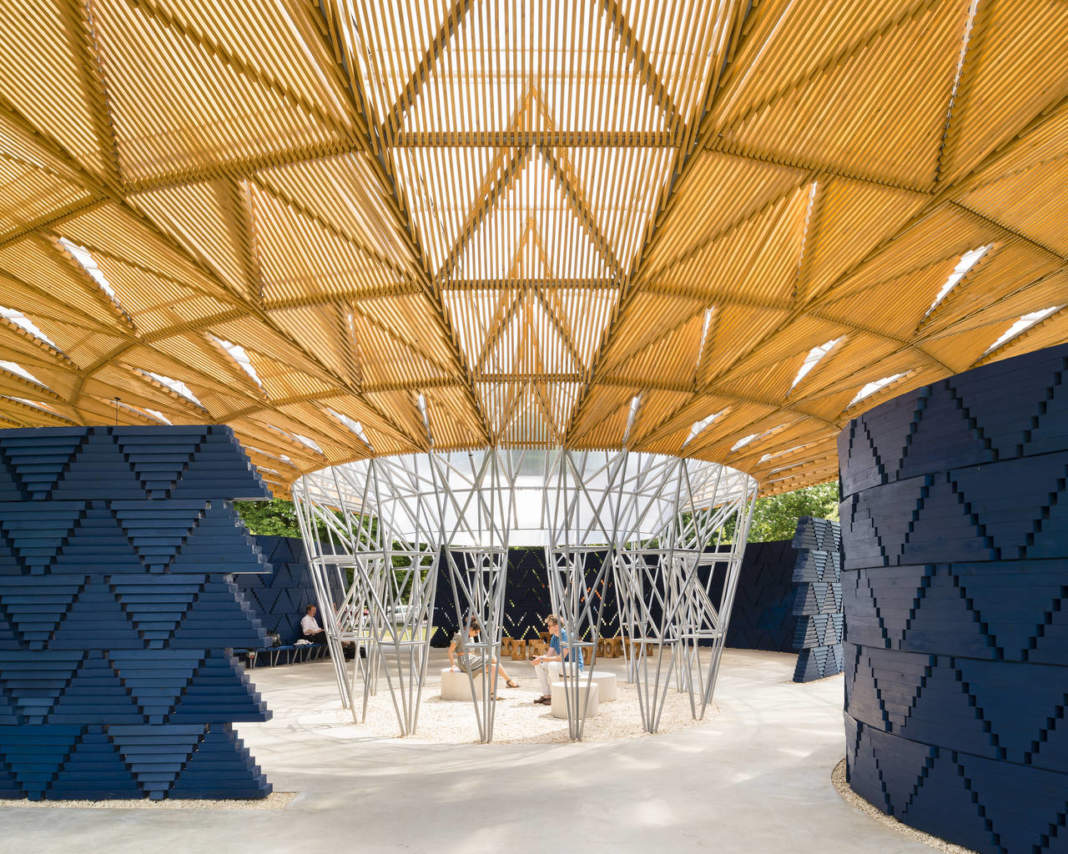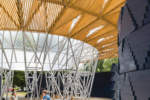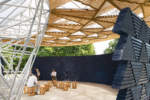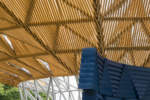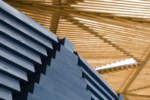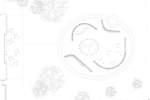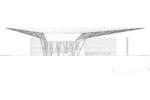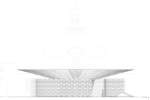architect: Kéré Architecture, Diébédo Francis Kéré
location: Kensington Gardens, London, UK
year: 2017
The proposed design for the 2017 Serpentine Pavilion is conceived as a micro cosmos – a community structure within Kensington Gardens that fuses cultural references of my home country Burkina Faso with experimental construction techniques. My experience of growing up in a remote desert village has instilled a strong awareness of the social, sustainable, and cultural implications of design. I believe that architecture has the power to, surprise, unite, and inspire all while mediating important aspects such as community, ecology and economy.

In Burkina Faso, the tree is a place where people gather together, where everyday activities play out under the shade of its branches. My design for the Serpentine Pavilion has a great over-hanging roof canopy made of steel and a transparent skin covering the structure, which allows sunlight to enter the space while also protecting it from the rain. Wooden shading elements line the underside of the roof to create a dynamic shadow effect on the interior spaces. This combination of features promotes a sense of freedom and community; like the shade of the tree branches, the Pavilion becomes a place where people can gather and share their daily experiences.
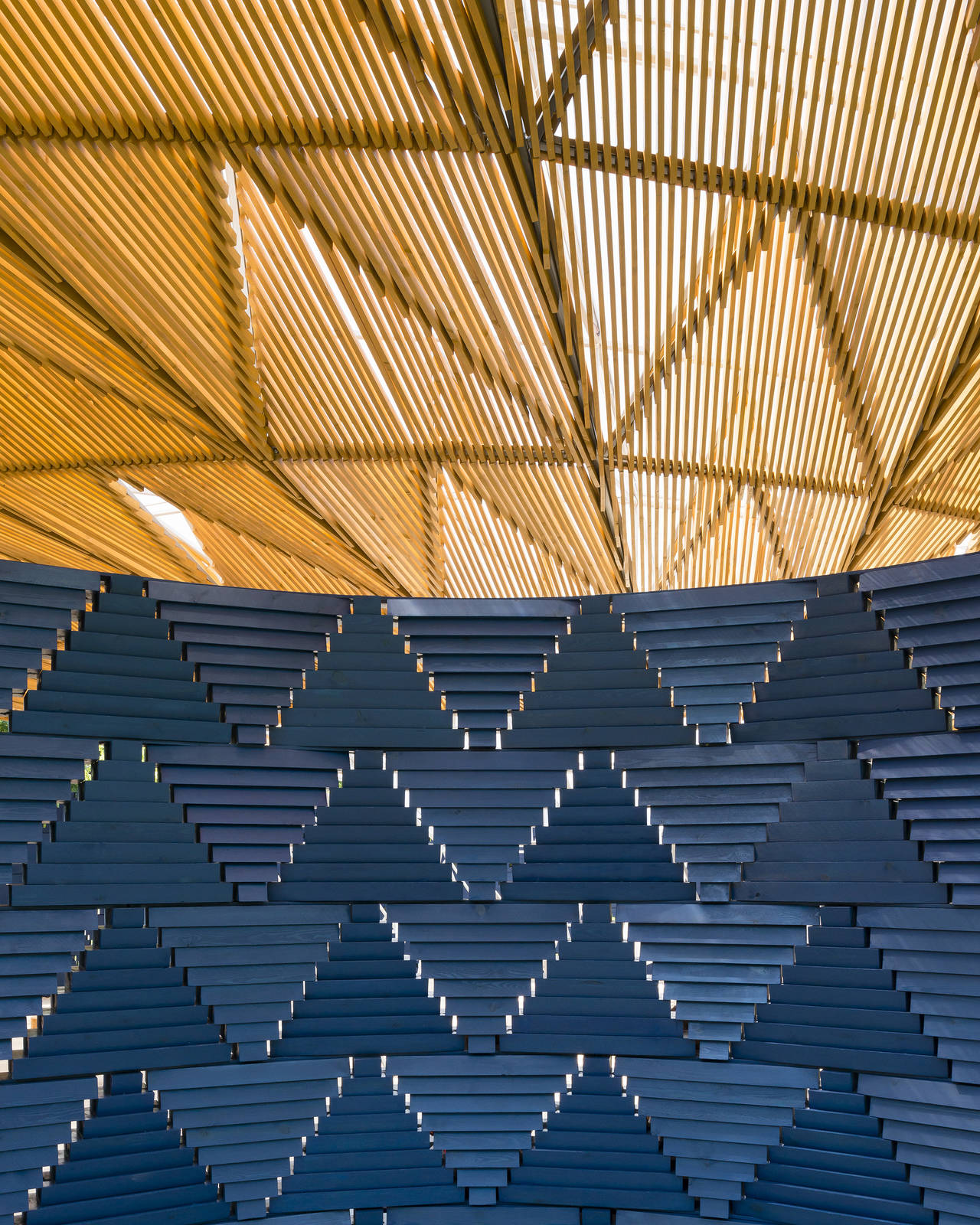
Fundamental to my architecture is a sense of openness. In the Pavilion this is achieved by the wall system, which is comprised of prefabricated wooden blocks assembled into triangular modules with slight gaps, or apertures, between them. This gives a lightness and transparency to the building enclosure. The composition of the curved walls is split into four elements, creating four different access points to the Pavilion. Detached from the roof canopy, these elements allow air to circulate freely throughout.
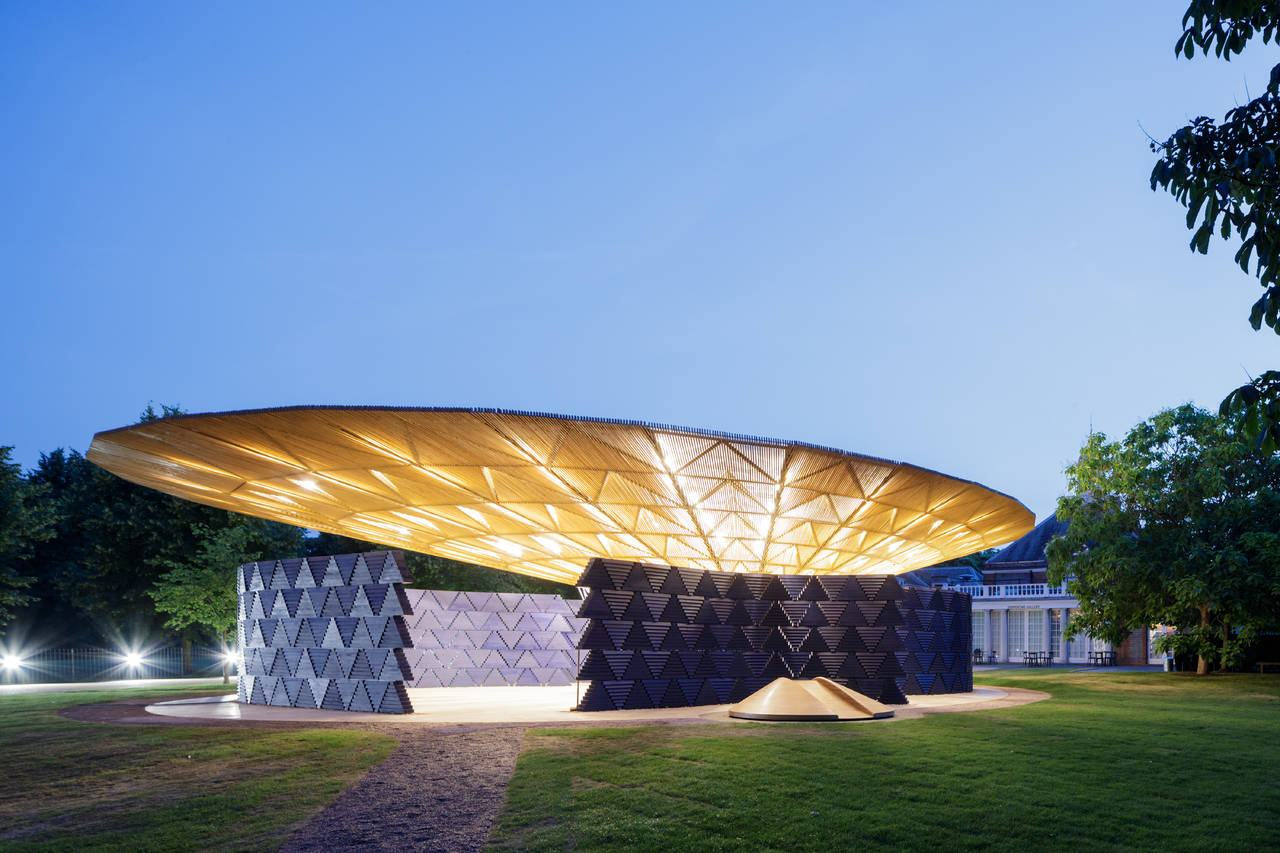
At the centre of the Pavilion is a large opening in the canopy, creating an immediate connection to nature. In times of rain, the roof becomes a funnel channelling water into the heart of the structure. This rain collection acts symbolically, highlighting water as a fundamental resource for human survival and prosperity. In the evening, the canopy becomes a source of illumination. Wall perforations will give glimpses of movement and activity inside the pavilion to those outside. In my home village of Gando (Burkina Faso), it is always easy to locate a celebration at night by climbing to higher ground and searching for the source of light in the surrounding darkness. This small light becomes larger as more and more people arrive to join the event. In this way the Pavilion will become a beacon of light, a symbol of storytelling and togetherness.
Francis Kéré, Kéré Architecture February 2017
local title: Serpentine Pavilion 2017
location: Kensington Gardens, London, UK
architect: Kéré Architecture, Diébédo Francis Kéré
architectural team: Blake Villwock (Project Architect), Adriana Arteaga, Greta Nina Tescari, Andrea Maretto, Jaime Herraiz Martinez, Damien Greder, Valeria Molinari, Johanna Lehmann, Laura Bornet
project directors: Hans Ulrich Obrist (Artistic Director) & Yana Peel (CEO), Serpentine Galleries
project leader: Julie Burnell, Serpentine Galleries
project curators: Melissa Blanchflower (Curators)
Amira Gad (Curators)
Joseph Constable (Assistant Curator)
advisors: Michael Bloomberg, Chairman, Serpentine Board of Trustees
David Adjaye, Architect and Trustee, Serpentine Board of Trustees
Richard Rogers, Architect
Andrew Scattergood, CEO, The Royal Parks
Dennis Clarke, Head of Park Services, The Royal Parks
Andrew Williams, Park Superintendent, The Royal Parks
Hassan Lashkariani, Westminster City Council District Surveyor’s Office (Building Control)
Jenny Wilson, Westminster City Council (Licensing Authority)
David Nevitt, Westminster City Council (Environmental Health Officer)
Westminster City Council Planning Office
London Fire and Emergency Planning Authority
London Region, English Heritage
Friends of Hyde Park
technical consultant: David Glover
engineering, technical design, lighting: AECOM Jon Leach, Amy Koerbel, Micheal Orr, Jack Wilshaw Katja Leszczynska, Sam Saunders, Ulrich Groenewald
town planning
consultants: DP9 Barnaby Collins, Katie Smith, Georgina Redpath
construction: Stage One Creative Services Ltd Tiff Blakey, Ted Featonby, Tim Leigh, Mark Johnson, Steve Kearney
client: Serpentine Galleries
sponsors: Goldman Sachs AECOM
Stage One Creative Services Ltd Weil, Gotshal & Manges Gallowglass Health & Safety Casone Group, DP9, Graham Foundation for Advanced Studies in the Fine Arts, Peroni Nastro Azzuro, Riva 1920, Site Engineering Surveys Ltd (SES), SDS Limited The Technical Department Ltd, Vitra
in collaboration with: Goethe Institut
patrons: Gumuchdjian Architects
those who wish to remain anonymous
digital engagement: Bloomberg Philanthropies
supporters: Arts Council England
building area: 330 sqm
design & planning phase: October 2016 – April 2017
construction phase: May 2017 – June 2017
status: Temporary Pavilion June 23 – October 8 2017


